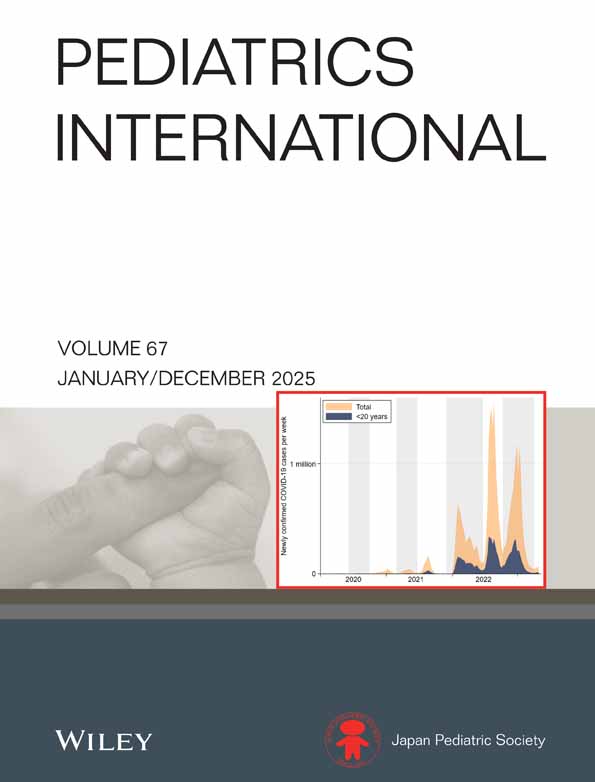Methylenetetrahydrofolate reductase polymorphism in Kawasaki disease
Abstract
Abstract Background: A genetic aberration in the 5,10-methylenetetrahydrofolate reductase (MTHFR) gene (677 C to T substitution) has been shown to result in reduced enzyme activity. The hypothesis tested in the present study was that a higher proportion of Kawasaki disease (KD) patients with coronary artery lesions (CAL) would have the T677 allele compared with patients without CAL and healthy subjects.
Methods : Genotypes for MTHFR were determined in 75 KD patients (male : female ratio 52:23) and 238 healthy subjects (male : female ratio, 110:128) by the polymerase chain reaction and restriction fragment length polymorphism method.
Results : The results indicated that female KD patients had a significantly higher frequency of the TT genotype compared with female control subjects. In the female population, the frequency of the TT genotype in patients with initial coronary aneurysm was significantly lower than in patients without this manifestation. Analysis of the data for the male population showed that the frequency of the TT genotype in KD patients developing coronary stenosis, occlusion or myocardial infarction was higher than that in those without these manifestations, although the difference was statistically insignificant.
Conclusions : The TT genotype may protect female KD patients against initial aneurysm formation and predispose male KD patients to severe coronary complications. Further large-scale studies may be required to confirm the contribution of homocysteine in the coronary sequelae of KD.




